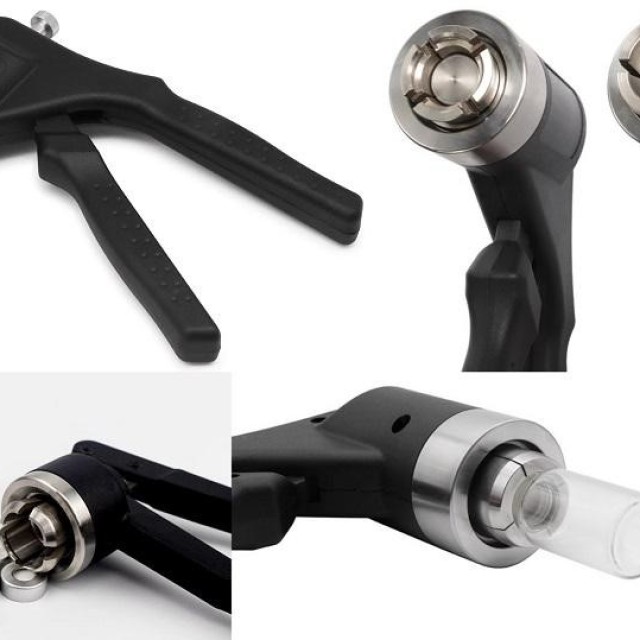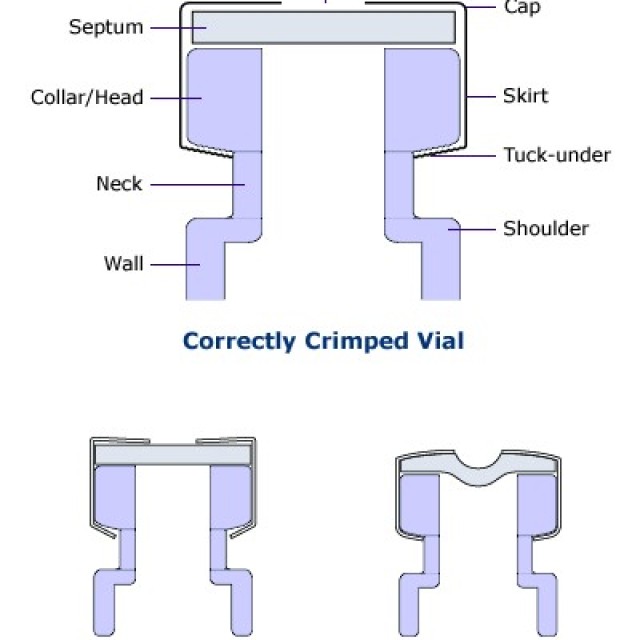
Hints and tips overview
HOW TO CORRECTLY CRIMP VIALS
Crimp vials are excellent sample containers for automatic dispensers of gas and liquid chromatographs and for storing samples or calibration solutions. The technique of closing them is very important for proper tightness. Due to leakage caused by improper sealing, solvent evaporation or loss of analytes may occur.
A correctly closed vial can be recognized by the fact that its cap rotates with difficulty after closing and the septum is straight.
A vial that is closed with too much force can be recognized by the fact that its cap cannot usually be turned at all and, in addition, it has a bent septum (inwards). If the septum is punctured by the needle of the microsyringe, the septum will be heavily stressed and thus the vial's tightness will be compromised.
A vial that does not have a properly closed cap due to the low power of the crimping pliers is manifested by easy rotation of the cap and, in some cases, unfastened aluminum material around the lower edge of the vial neck.
You can set the correct force of the closing pliers.
In older types of pliers, the force is adjusted by turning the Allen key inside the jaws. Pliers also have a stop screw, which is used to set the safety distance, in order not to use too much force and thus to avoid leakage or even mechanical damage to the vial.
Glassware deactivation
Glassware deactivation with DMDCS
Dimethyldichlorsilane (DMDCS) reacts with active hydroxyl groups present on glass surface producing a deactivated layer. This ensures inert glassware used for sensitive compounds.
Procedure
During the deactivation process, the reaction releases hydrogen chloride (HCl). So we strongly recommend to do this procedure in a fume hood.
- Use 5% DMDCS solution in toluene. You can prepare this solution by diluting 20 ml of DMDCS with 400 ml toluene. Store the solution in an amber glass at room temperature.
- Soak glassware in 5% DMDCS solution for 15 to 30 minutes.
- Rinse glassware twice with toluene.
- Soak glassware in methanol for 15 minutes.
- Rinse glassware with methanol.
- Dry glassware with high purity nitrogen (moisture and hydrocarbon free).
Hints and tips
 This site includes technical information, hints and tips for your decisions, and recommendation for selecting right chromatography accessories.
This site includes technical information, hints and tips for your decisions, and recommendation for selecting right chromatography accessories.
- Agilent GC inlet seal improvment
- Dynamic headspace
- GC column conditioning procedure
- GC column installation
- GC liners
- GC septa selection
- Glassware deactivation procedure
- How to improve GC capillary column connections
- How to increase signal/noise ratio in GC systems
- How to set optimum linear velocity
- How to handle chiral HPLC columns
- LC separation performance improvement
- LC column selection
- Syringe care
- Syringe tip selection
- Thermal desorption
Syringe tip selection
The selection of suitable syring tip is mentioned in Hamilton catalogue. Please, ask for this catalogue.





 0
0
 0
0
